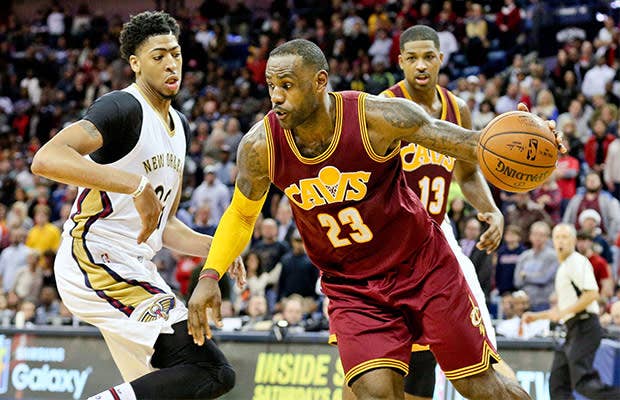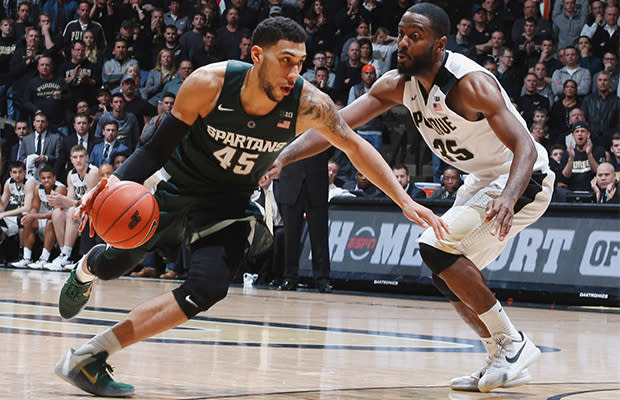
The talent pool that makes up the NBA draws from a range that spans pretty much the entirety of the globe. Over the history of the association, we’ve seen players from 75 different countries and territories lace up their sneakers to take an NBA court. In fact, this past year alone saw 100 players from 37 different countries and territories in addition to the well over 300 homegrown players from the U.S. With such a wide diversity of nations represented at the world’s highest level, basketball has undoubtedly earned the distinction of being known as a “worldwide” game.
However, despite the wealth of nations combed over by NBA front offices and scouts, one relatively small area of the planet still reigns supreme when it comes to supplying the league with gifted players. That region (which you would know if you read the headline) is the American Midwest, a 12-state area just as apt at growing NBA talent as it is at growing corn, soy, or…whatever other crops they grow in the Midwest.
With the abundance of ability we’ve seen over the past decade from guys like Draymond Green, Derrick Rose, Anthony Davis, and—oh yeah—LeBron James, we feel it’s safe to say that the pipeline stemming from the middle of the country is just as plentiful now as it was when Isiah Thomas, Larry Bird, and Magic Johnson were still playing.

The reason behind the steady excellence can be attributed to a number of factors, including the fact that the area encompasses traditional statewide hotbeds driven by a deeply ingrained basketball culture, like Michigan and Indiana, as well as housing one of the world’s foremost basketball cities in Chicago.
Additionally, most of the schools from one of the premier basketball conferences in the country (the MAC Big 10) lie within the Midwest’s boundaries for players that opt to play their college ball near home. However, before anyone from middle-America is even thinking about their collegiate choice, they’re aided by nearly unmatched prep development from a number of the most consistently excellent AAU clubs on the planet.
While AAU ball has come under fire over the years, for everything ranging from allegations over the conflicts of interest of the shoe companies that sponsor several of the organization’s teams and tournaments, as well as comments from one of the most authoritative voices in the sport *cough* Kobe Bryant *cough* that the brand teaches “hero ball” instead of fundamentals, it has also allowed for players who would otherwise go unnoticed an opportunity to showcase their game to an untold number of college/pro scouts. For the best example (…that we could think of) look no further than Chicago’s own Anthony Davis.
It may shock you to learn that Davis, the first overall pick in the 2012 NBA Draft, played for a wretched high school hoops program that didn’t even have its own gym. Still, his exposure with a top-notch AAU program that previously groomed both Derrick Rose and Eric Gordon, and that was coached by ex-NFLer Tai Streets, gave him the exposure that transformed him from a guy about to give up on basketball to a five-star recruit. As Davis puts it, “If I would have gone into my senior year without playing AAU basketball that summer, no telling what could have happened, where I would have been, where I would have gone to college, if I would have gone to college. There’s no telling.”
Instead, he chose the AAU route with a championship-winning club, got rated the No. 1 prospect in the country, went to Kentucky, won the NCAA Tournament, was drafted No. 1 overall and, last year, signed a $150 plus million dollar contract. Safe to say he made the right decision.
Another element that likely comes into play (though it’s tougher to cite) includes the harsh northern winters most Midwestern states deal with, which encourages indoor sports between, say, Halloween and April Fools’ Day. Compare that to the climate in Southern California (one of a small handful of regions that can compete with the Midwest’s hoops scene) which has weather that ranges from hot to hotter than hell.
When you mix the amateur sports development infrastructure that’s been established in an area with weather that makes competing sports difficult to participate in year-round, you have a recipe for sustained success that has been passed along from generation to generation.

With that being said, the future of the area’s representation in the NBA continues to look bright as potential stars, whose prep games were developed in the Midwest, heard their names called by the commish during this year's NBA Draft. Some of those guys include reigning AP Player of the Year Denzel Valentine (Michigan born and raised), Deyonta Davis (also Michigan born and raised), Henry Ellenson (Wisconsin born and raised), and reigning John Wooden Award winner Buddy Hield, who was born in the Bahamas but eventually transferred to a prep school in Kansas.
With such a gifted class on the immediate horizon, it appears likely that top-tier talent will continue to permeate the NBA well into the foreseeable future. As for the Midwest pipeline, well, count on it to keep on running smoothly for generations to come.

